Philips PML8709 is a model that stands out in the offering of the Chinese-Dutch manufacturer due to its uniqueness. Instead of the classic Philips operating system - TitanOS, we find the well-known Google TV, which provides extensive personalisation options and access to a vast library of apps. This is a television that, on one hand, entices with very good contrast, and on the other – surprises with several unusual design decisions. In terms of picture quality, the PML8709 offers excellent contrast, which combined with wide colour gamut coverage ensures great colour reproduction – especially after calibration. Despite having a 60 Hz panel, the television performs well in occasional gaming thanks to support for features such as ALLM, VRR, and a low input lag of around 13 ms. On the flip side, Philips has deprived this model of one of the biggest advantages of its TVs – the Ambilight system. This is a surprising move that may disappoint many brand fans. Another weak point is HDR performance – despite promising contrast results, the television performs averagely in this category. Average brightness and issues with detail in brighter scenes give the impression that something has clearly gone wrong in the implementation of this feature. Philips PML8709 is a television full of contrasts. On one hand, it offers solid black quality and interesting solutions for gamers, while on the other – some limitations, such as the absence of Ambilight or average brightness, mean that it is not a model without flaws. It is a good choice for those who appreciate the versatility of Google TV and are looking for a television for everyday use.
- Matching (Score)
- Our verdict
- TV appearance
- Where to buy
- Contrast and black detail
- HDR effect quality
- Factory color reproduction
- Color reproduction after calibration
- Smoothness of tonal transitions
- Image scaling and smoothness of tonal transitions
- Blur and motion smoothness
- Console compatibility and gaming features
- Input lag
- Compatibility with PC
- Viewing angles
- Daytime performance
- Panel details
- TV features
- Apps
- Playing files from USB
- Sound
Philips PML8709 vs Haier Q80FUX
Direct comparison


Panel type: LCD VA
Resolution: 3840x2160
System: Google TV
Model year: 2024
Complete the survey to find out the result

Panel type: LCD VA
Resolution: 3840x2160
System: Google TV
Model year: 2025
Complete the survey to find out the result

Overall rating
6.1
5.8
Movies and series in UHD quality
6.3
5.9
Classic TV, YouTube
6.6
5.6
Sports broadcasts (TV and apps)
5.6
4.7
Gaming on console
7.2
6.7
TV as a computer monitor
3.5
6.0
Watching in bright light
4.8
4.8
Utility functions
6.5
5.6
Apps
9.6
9.6
Sound quality
5.1
5.5
Complete the survey to find out what fits your preferences
Advantages
Google TV operating system – intuitive and versatile
Very good contrast
Very good coverage of the DCI-P3 and BT.2020 colour gamut
Low input lag - around 13 ms
Support for ALLM, VRR and HGiG in gaming mode
Very good native contrast and decent black (thanks to the VA panel)
PFS / QLED Filter - Wide colour gamut (about 95% DCI-P3)
Remarkably low input lag (below 10 ms at 120Hz and about 12 ms at 60Hz), making it a great choice for fast-paced games.
Support for 120Hz at lower resolution (Full HD) and the presence of VRR and ALLM
Support for Dolby Vision
Well-functioning file player via USB
Presence of analogue headphone output (jack)
Disadvantages
The quality of the HDR effect leaves a big sour taste
No Dolby Vision
Not suitable for PC work
No Ambilight system
The image is quite "blown out" in HDR
Google TV software is full of bugs, poor translations, and issues
Lacks any image enhancement features (noise reduction, gradient smoothing)
Average brightness
Flat, bass-less sound
High input lag in Dolby Vision mode for gaming
Weird and not very ergonomic remote
Our verdict
The Haier Q80FUX television is one of the most schizophrenic propositions we have had in our editorial office for a long time. On one hand, we have a solid piece of equipment: a VA panel guaranteeing deep blacks, as expected for this segment, and a QLED quantum filter that can indeed generate juicy, eye-catching colours. This is the foundation on which a truly competitive mid-range receiver could have been built. Unfortunately, all this potential of the matrix is systematically undermined by the software, which is a real anchor for this model. The biggest Achilles' heel of the Q80FUX is its total capitulation in dealing with HDR10 materials. The electronics seem to completely misunderstand how to interpret the signal, resulting in it consistently blowing out the brightest parts of the image, turning them into a flat, milky spot. Adding to this is the Google TV system, which – while functional – is unstable, full of bugs and annoying oversights, giving us an image of a raw product that clearly reveals the producer's lack of experience. Just when we were about to write this model off, we discovered its surprising niche. After connecting a console, the Q80FUX undergoes a transformation. It turns out that this television offers remarkably low input lag, fully supports VRR, and can handle a 120Hz signal in Full HD resolution. In the gaming world, where responsiveness is everything, these parameters put it in a very good light. So we are dealing with a device of very narrow specialization. It is not a universal living room television – it lacks stability and, above all, any correctness in handling films. It is rather a budget, large-format monitor for gamers, who can consciously forgive it all the software flaws in exchange for those few key attributes for console/PC at a relatively affordable price.
TV appearance





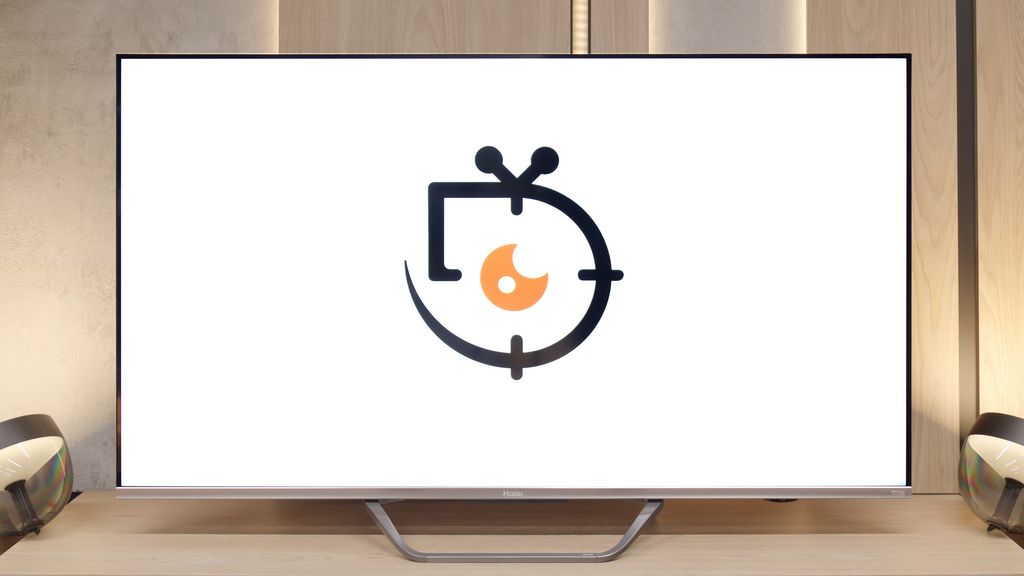
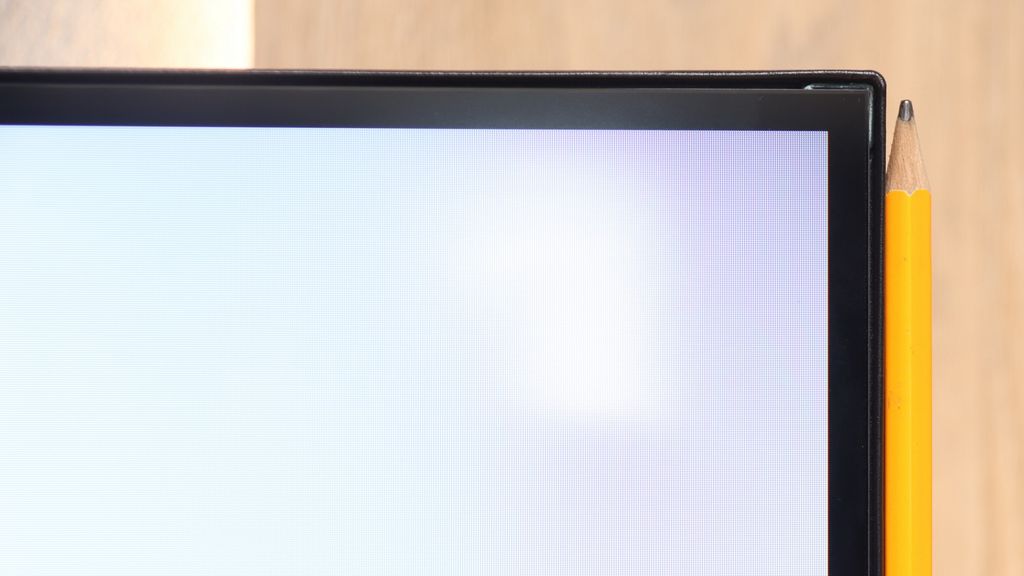
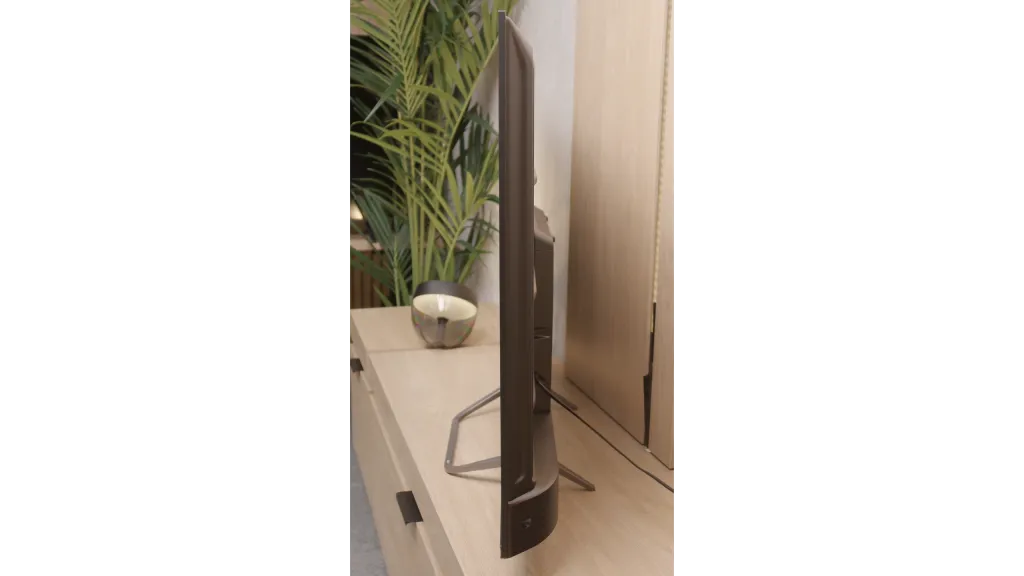
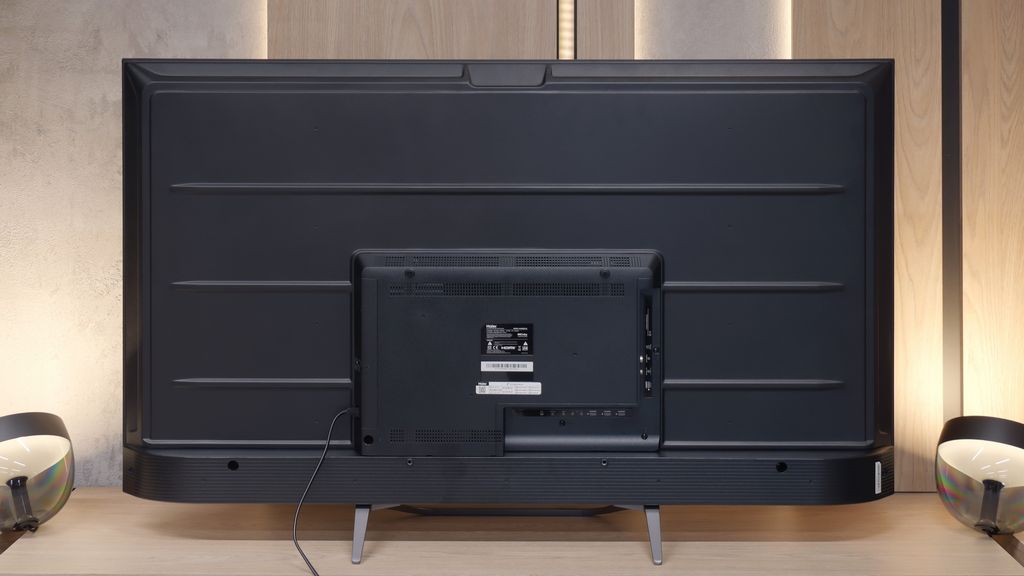
Contrast and black detail
7/10
6.3/10
Local dimming function: Yes, number of zones: 96 (16 x 6)
Local dimming function: No
Contrast:

Result
58,650:1

Result
37,150:1

Result
10,850:1

Result
6,150:1

Result
5,100:1

Result
5,200:1

Result
7,400:1

Result
7,550:1

Result
7,300:1

Result
6,450:1
Halo effect and black detail visibility:

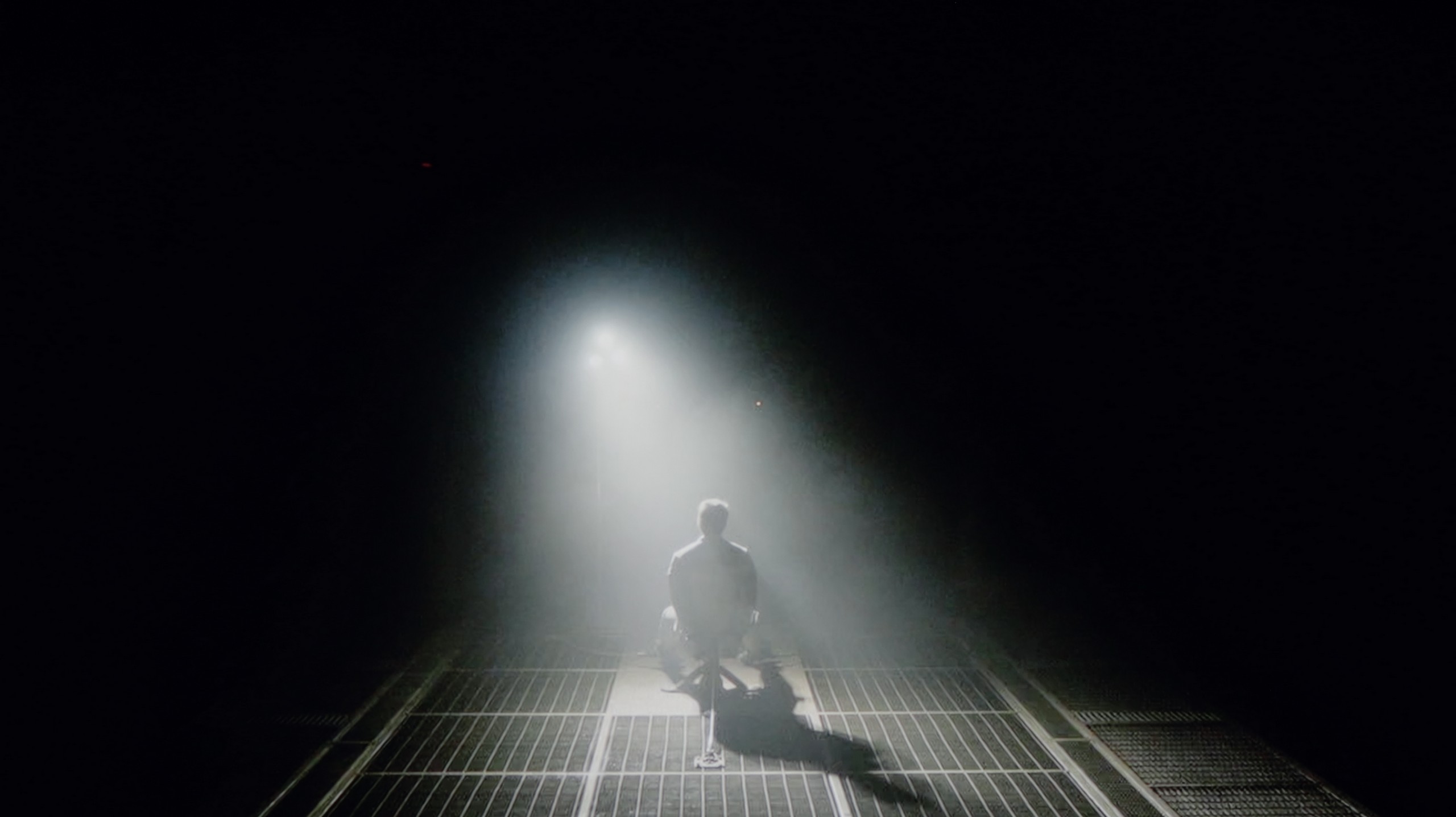
The model name 8709 “PML” refers to Philips' mini-LED technology, but can we truly call its backlighting that? In the 65-inch version, we counted only 96 local dimming zones. For mini-LED standards, this number seems too low, raising questions about whether we are indeed dealing with a full-fledged mini-LED here. However, if we look at the black quality, the TV performs quite well. On the first two test patterns and in less demanding scenes, the picture looks very decent – blacks are deep and the contrast is satisfactory. Problems begin with more complex scenes, such as the last three test patterns, where minor light elements appear on screen. The local dimming algorithm seems to “lose track,” unable to decide whether to brighten or darken a particular area. The result is noticeable errors – reduced black quality and unevenness in the image. An example of the operation of local dimming zones can be seen in a scene from the film Sicario 2. You can see how the dimming zones attempt to replicate details, but at the same time, this leads to a slight brightening around the helicopter lights. Nevertheless, despite these shortcomings, the black level in the Philips PML8709 turns out quite well, especially considering its price range.
I must admit that approaching a TV in this price range, one instinctively crosses their fingers, hoping that at least the black won't be a grey blotch. Meanwhile, the Haier Q80FUX, specifically the 55-inch unit we have in our office, can pleasantly surprise in this regard. Its secret lies in the use of a VA panel, which tends to generate high contrast by nature. And these are not empty promises. During screenings, in the majority of film scenes, the contrast reported itself at levels ranging from 5000:1 with commendable regularity, often reaching as high as 8000:1. These are really strong results, considering the fact that this TV has no, not even minimal, form of local dimming. Translating this into couch-side experiences: for its price point, the Q80FUX offers solid black levels. Of course, it isn’t that perfectly velvety depth that makes the screen disappear into darkness. When we conduct a viewing in total light isolation, we can see that in the darkest parts of the image, the black betrays its budget origins, subtly shifting towards a bluish glow. However, this is a defect that is easy to mask – just a bit of light from a lamp in the corner of the room is enough for this nuance to become invisible, and the image regains a satisfying depth.
HDR effect quality
4/10
4.9/10
Luminance measurements in HDR:

Result
367 nit

Result
126 nit

Result
309 nit

Result
119 nit

Result
348 nit

Result
308 nit

Result
327 nit

Result
352 nit

Result
330 nit

Result
344 nit
Scene from the movie “Pan” (about 2800 nits)


Scene from the movie “Billy Lynn” (about 1100 nits)


Static HDR10


Dynamic: HDR10+
Dynamic: Dolby Vision


HDR luminance chart:
Haier Q80FUX
HDR luminance
Philips PML8709
HDR luminance
Looking at the contrast results, we expected that the algorithms responsible for the zones in the Philips PML8709 would be at least decent. However, what we encountered during testing is difficult to explain. The average brightness we managed to achieve was just 350 nits, which is definitely too low to fully enjoy HDR effects. In practice, the TV barely stands out compared to an average SDR. The situation becomes even more surprising in test scenes, such as the second one from the movie Life of Pi or Sicario 2. Small light elements achieve just 120 nits there, making them practically imperceptible. Such a level of brightness is completely below modern HDR standards and significantly diminishes the experience of watching high-quality content. The only bright spot in this category is the very good coverage of wide color gamuts – DCI-P3 at 97% and BT.2020 at 83%. This ensures that colors are saturated and well-reproduced, which can somewhat improve the overall experience of watching HDR materials. However, the lack of adequate brightness means that even this cannot save the Philips PML8709 in this category.
Alright, let's move on to the topic that really sparks discussions, which is the capabilities of the TV in HDR mode. Let's be clear from the start: the Haier Q80FUX is certainly not a brightness demon. The panel of this set can generate about 350 nits at peak, which in today's reality is an absolute minimum to even talk about the presence of HDR expanded dynamic range. On the plus side, this brightness is at least stable – regardless of the test pattern or film scene we used, measurements consistently hovered around 300-350 nits. These are at best adequate results, definitely far from the dazzling display of capabilities that we know from more expensive models. Fortunately, there is one aspect where the Q80FUX makes up for these shortcomings and does so considerably. We are talking about a QLED TV (or more precisely PFS LED), which means that thanks to the quantum dot filter used on the panel, it can generate truly juicy, vibrant colours. These are not empty promises – covering nearly 95% of the DCI-P3 colour gamut is an impressive result and directly translates into very pleasant, saturated colours for the eye.
Factory color reproduction
3.9/10
4/10


Factory Mode
After calibration
Though theoretically the Filmmaker mode in the Philips PML8709 should provide natural colour reproduction, in reality it resembles a store mode more. In the white balance, both for HD and 4K content, there is a clear dominance of blue. This causes the image to appear washed out and cold, which is particularly noticeable in the comparative image below.
The brightness characteristics also leave much to be desired. Both gamma and the EOTF curve exhibit excessive screen brightness. As a result, there is a loss of detail in both the brighter and darker areas of the image, further diminishing its credibility and naturalness. Bright elements appear unnaturally flat and little varied.
These significant issues with white balance and brightness characteristics lead to noticeable errors in colour reproduction, which can easily be seen in films as well as the Colour Checker test. The colours are inaccurate, affecting the overall image quality and visual experience. The factory settings require significant improvement in order to fully enjoy the potential of this television.
Factory settings for movie mode are seldom perfect, but in the case of the Q80FUX, we encountered a noticeable imbalance. In SDR content, the image was definitely too warm, due to an excessive amount of red in the white balance, giving the overall picture a slight sepia tone. Conversely, in HDR materials, the television fell into the other extreme – an excess of blue caused an unnatural, cool effect in perception. However, it wasn't the fickle white balance that was the biggest issue with this TV. The real culprit, responsible for the previously described problems, was hiding deeper. It turned out that the Q80FUX has completely miscalibrated gamma values and, crucial for HDR, a poorly executed EOTF curve. It was these erroneous factory settings that caused the notorious clipping of the brightest parts of the image, imposing that characteristic milky filter over them. Thus, we found the source of the problem. This situation led to general, significant colour inaccuracies that were easy to catch even for an untrained eye. Like every television we tested, we decided to calibrate this model as well, and you can find the results of these adjustments in the next paragraph.
Color reproduction after calibration
7.6/10
6.1/10




Philips offers advanced image calibration tools in its televisions, which we decided to fully utilise. The results? Although we managed to improve many aspects, it wasn't without difficulties. White balance was one of the biggest challenges – despite our efforts, it could be called fighting against windmills. We were able to significantly correct it, so the picture now looks much better than in the factory settings, but it is still far from perfect. Especially in some scenes, a subtle dominance of blue is visible, although not as intense as before. We achieved a significant improvement in brightness characteristics – gamma now appears much more stable. The EOTF curve looks correct at first glance, however, when analysing movie content, it is evident that the television has trouble maintaining the proper characteristics. The algorithms are "struggling", trying to adjust brightness, which may be due to the limited number of dimming zones that do not always handle more complex scenes well. Overall, the picture after calibration looks much more pleasing to the eye – colors are more natural, and colour reproduction errors have been minimised. Although it is still not perfect, the Philips PML8709 now presents itself much better than in the factory settings.
The results of our calibration procedures must, unfortunately, be regarded as twofold. Generally speaking, the picture is undeniably better than before the adjustments; however, the biggest winner of this process has been SDR content. It is precisely here, after correcting the gamma curves and white balance, that we achieved results that can safely be called very good. Once set up, the Q80FUX truly shines in standard dynamic range, displaying only slight errors in the most challenging skin tones. Unfortunately, the weakest link remains HDR content. And here's the paradox: even though we managed to calibrate the white balance to near perfection, the overall colour errors still remain at quite a high level. The reason is that the television still interprets the static HDR10 metadata "in its own way," stubbornly enforcing that unfortunate image clipping effect, which inevitably leads to significant distortions. Although we successfully eliminated the factory excess of blue, due to this electronic interference, the screen can still veer into somewhat too cool tones. That’s just how this television is.
Smoothness of tonal transitions
9.1/10
7.5/10












The fluidity of tonal transitions in the Philips PML8709 is at a very high level. The colour gradation is incredibly smooth, and the transitions between shades look natural and detailed. Even in more demanding scenes, the television performs excellently. Minor issues may arise with bright elements, where the gradation can be slightly less precise. However, these are such subtle differences that only the most demanding purists will notice them. For most users, the effects will be fully satisfying, and the image will maintain its impressive quality.
Analysing the ability of the television to handle subtle tonal transitions, or "banding", leads us to some interesting conclusions. The Haier Q80FUX seamlessly blends adjacent colours in most scenes, creating a smooth, cohesive image. However, this process is not without its flaws. During our tests, we noticed minor issues and imperfections in each of the test scenes we used. These may not be errors that aggressively jump out and ruin the viewing experience, yet their presence is worth noting. Interestingly, this receiver does not exhibit any particular weaknesses or strengths in this regard – it handles this challenge in exactly the same way, regardless of whether it is displaying delicate gradients of a bright sky or dark transitions in shadows.
Image scaling and smoothness of tonal transitions
6.9/10
4/10
Smooth transition function

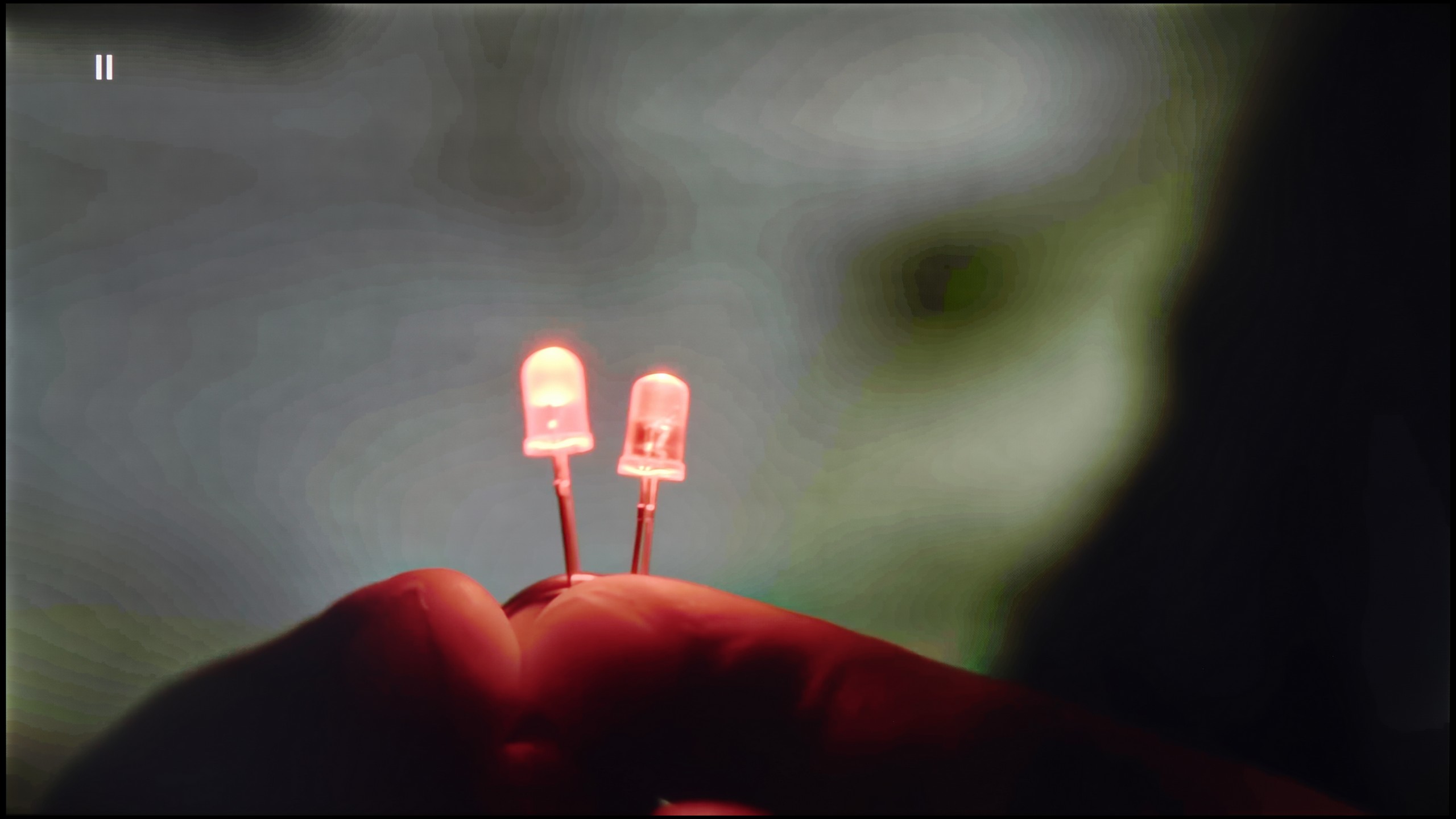
Image without overscan on the SD signal


The distortion reduction feature in the Philips PML8709 smooths tonal transitions, but its effectiveness leaves much to be desired. We recommend setting this option to "Medium" - at this level, the effect is noticeable but not excessive. Unfortunately, compared to other Philips models, the smoothing effect is less effective, meaning that certain tonal transitions may still appear somewhat uneven. An additional drawback is that this feature also smooths other details, such as the textures of materials like shirts, which can affect image sharpness.
As for image scaling, the television performs very well. The image appears smooth and free of noticeable "jaggies". This effect may appeal to many users, although some might prefer a more vivid look. Fortunately, the television allows for adjustment of the sharpness parameter, enabling us to tailor the image to individual preferences.
If there's one area where Haier clearly shows it still has a lot to catch up on compared to the market leaders, it's digital image processing. The upscaling, well... it's just okay. And that's really all that can be said about it. It does what it's supposed to do: ensures that lower resolution signals don't scare you with harsh pixelation on the screen and don't look like a forcibly enlarged postage stamp. However, it's far from the finesse and "intelligent" sharpening that more experienced players in this market have developed over the years. The biggest issue with the Q80FUX software is the almost complete lack of additional "cleaning" and smoothing features for the image. The receiver offers no noise reduction mechanisms or gradient enhancement. This means that with older or highly compressed materials, we simply have to accept that all the imperfections in tonal transitions or colour blending, which we mentioned earlier, will constantly accompany us during viewing.
Blur and motion smoothness
5/10
4.5/10

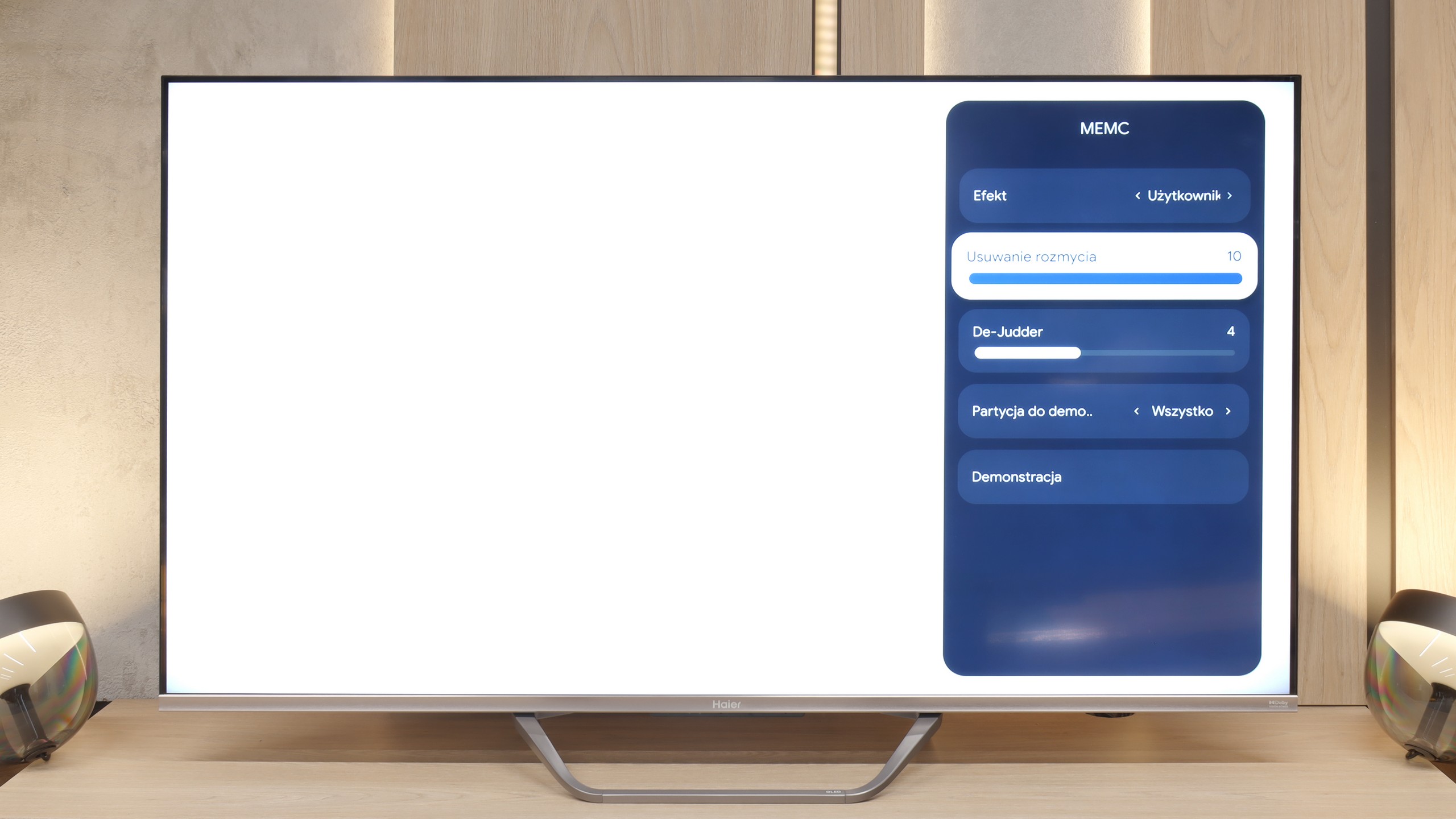
Blur (native resolution, maximum refresh rate):



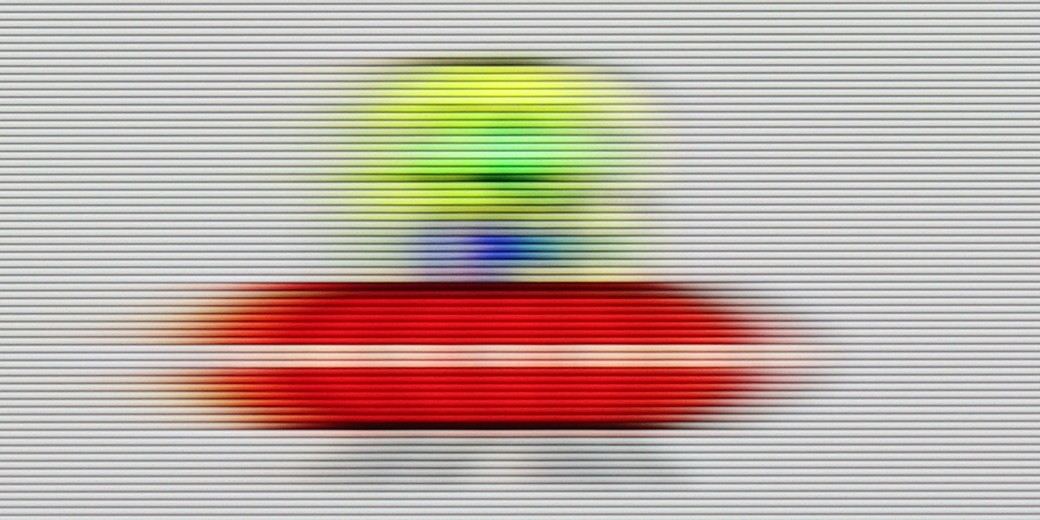
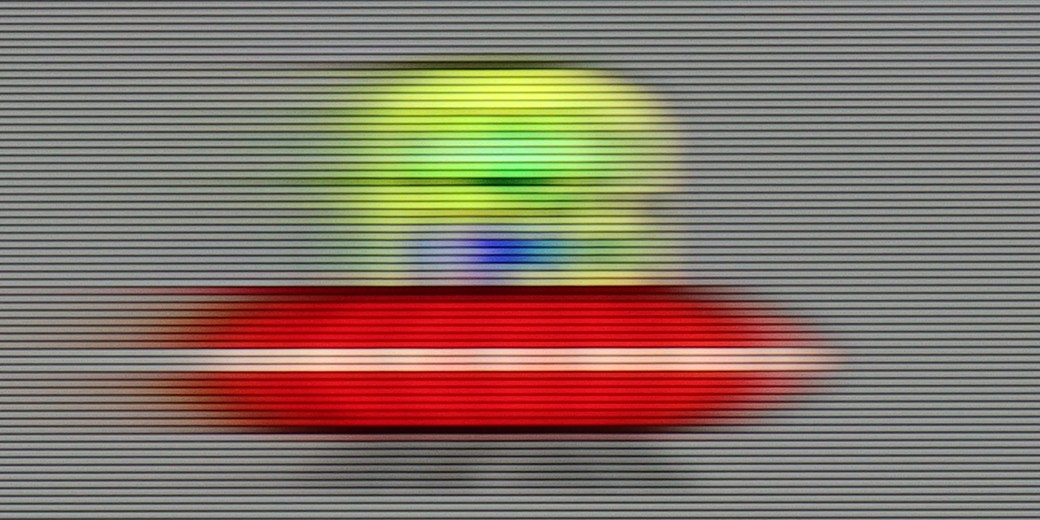
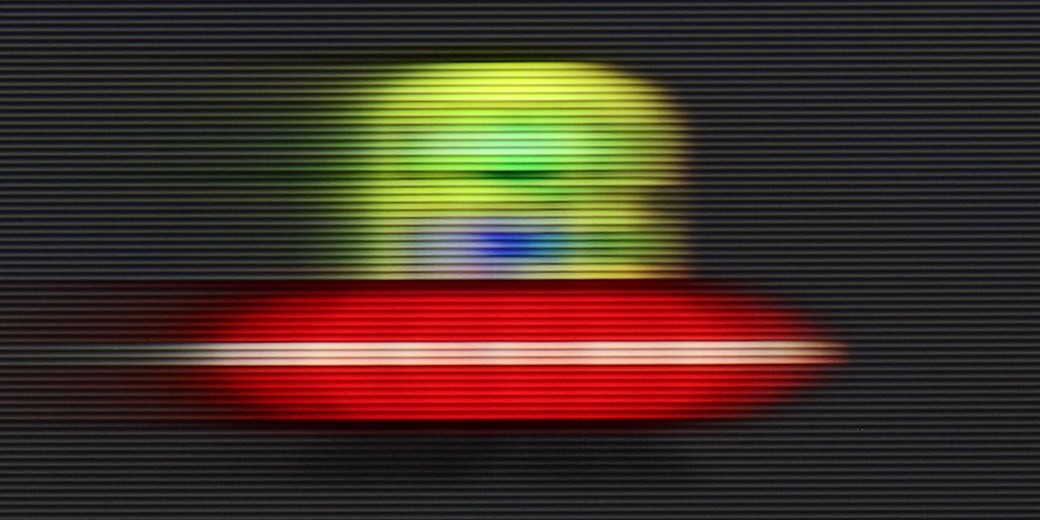
Philips PML8709 is one of the few models with mini-LED technology on the market, offering a refresh rate of 60 Hz. While it’s not a panel for the most demanding gamers, it should satisfy those who mainly watch movies. The TV is equipped with a “Motion Style” feature, which is a motion smoother that allows you to adjust the fluidity of motion according to your preferences – from a more “plastic” look to a cinematic aesthetic with clearly visible frames.
The issue of motion fluidity and blurring is largely predetermined by the use of a 60Hz panel, which naturally makes it difficult to recommend this receiver to enthusiasts of very dynamic content. Fortunately, in the Q80FUX, we find a few options (although, as will soon become clear, really just one) intended to enhance the experience with older film productions. There is a "De-Judder" slider available, which indeed affects motion fluidity and allows us to adjust it to our preferences: from raw, cinematic frame rates to a more theatrical, smoothed presentation. However, a true surprise awaits us right next to it in the menu. There is also a second slider, supposedly dedicated to removing blur – this is a feature we typically encounter in 120Hz panels, aimed at combating blurring in sports. As we expected, recalling memories from testing the K85F model, here too this slider is merely a façade. Its adjustment contributes absolutely nothing to the picture and simply seems to be an oversight by the product engineers who left a non-functional option in the software for this type of panel.
Console compatibility and gaming features
6/10
5.6/10
- ALLM
- VRR
- VRR range48 - 60Hz48 - 120Hz
- Dolby Vision Game Mode
Yes, high input lag
- Correct implementation of HGIG
- 1080p@120Hz
- 1440p@120Hz
- 4K@120Hz
- Game bar

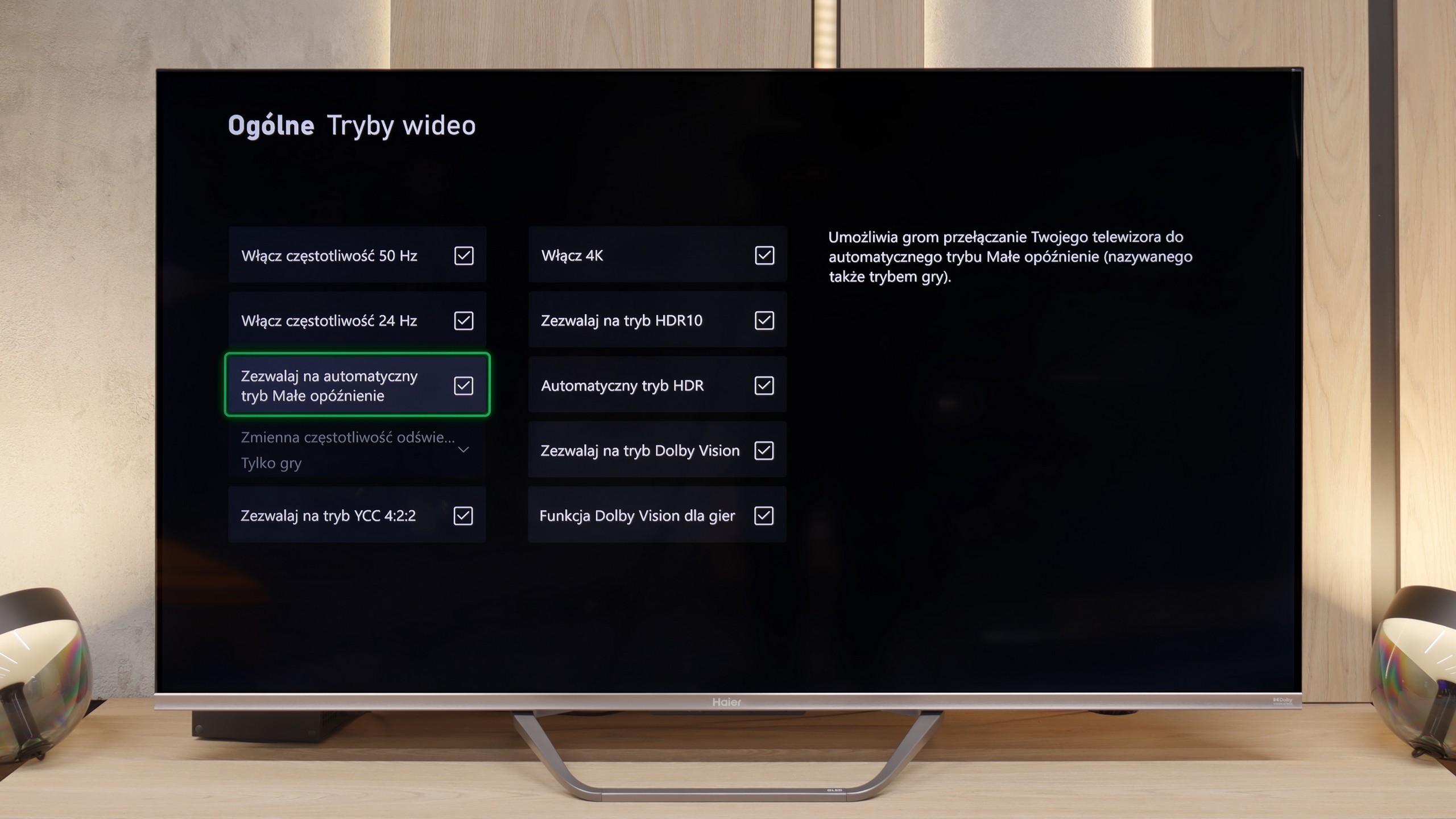

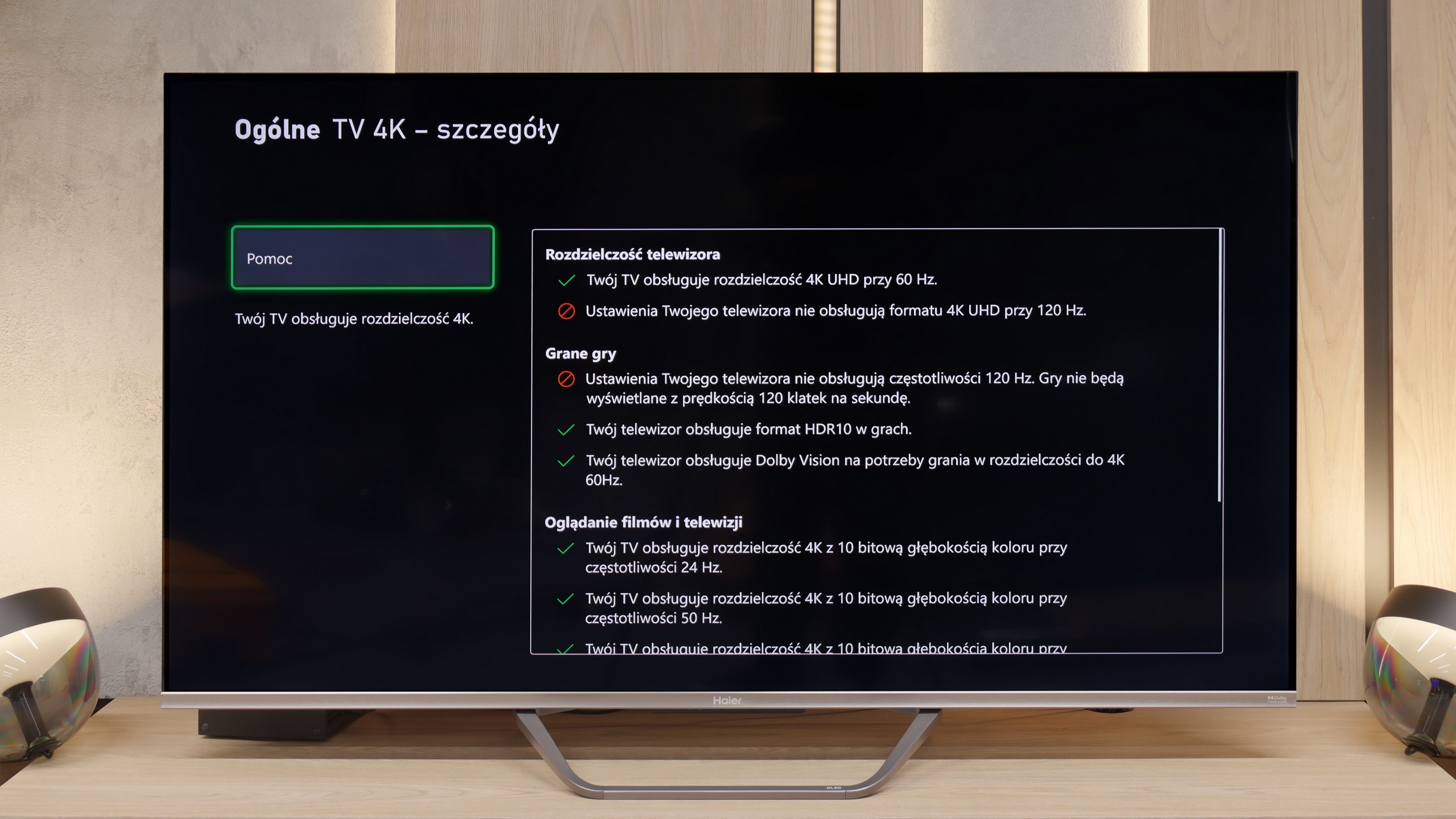




Philips PML8709 is a television aimed more at casual gamers, mainly due to the 60 Hz panel, which won’t meet the expectations of the most demanding users. However, for those who appreciate gaming at a more moderate pace, this model may prove sufficient.
The television offers several gamer-friendly features, such as ALLM (automatic switching to game mode) and VRR (variable refresh rate), which help in providing smoother image display without annoying stutters. Furthermore, in terms of HDR, we find the implementation of HGiG, which adjusts the HDR effect to the specifics of games, ensuring a more natural image in appropriately optimised titles. Unfortunately, there is no support for Dolby Vision mode, which may be noticeable in games that utilise this format.
A nice addition is the presence of a basic "Game Bar," which allows for quick previewing and modification of the most important settings related to gaming. It’s a simple but useful touch, especially for those who frequently change their configuration between different types of gameplay. Despite some limitations, the Philips PML8709 offers a solid set of features for less demanding gamers.
Entering the realm of gaming, the Haier Q80FUX proves to be quite a good companion for the "casual gamer." It is equipped with some highly sought-after features today such as VRR (variable refresh rate) and ALLM (automatic low latency mode). However, the biggest surprise is something else. Even though we don't have a 4K@120Hz panel here, the television can accept and display a 120Hz signal at a lower resolution (Full HD). This is a very useful feature, allowing you to consciously switch the console to a lower resolution mode in exchange for significantly higher fluidity, which is a perfectly acceptable compromise in the gaming world.
We won't particularly complain about the lack of additions like the "Game Bar," as it's just a nice extra. However, the most concerning issues arise when we enter the world of HDR in gaming. Due to the fact that the television continuously adapts the signal "in its own way," setting the brightness on the console according to the HGIG standard is almost impossible to accomplish according to the instructions. Worse still, in Dolby Vision mode for gaming, the input lag increases to around 50 ms, which is a high enough value that essentially makes this mode unusable. Generally speaking, we still wouldn't recommend gaming on this television in HDR mode, so these aren't that serious shortcomings. What’s most pleasing is the presence of 120Hz in Full HD, making the Q80FUX quite a cool television for the occasional gamer.
Input lag
10/10
9.4/10
SDR
HDR
Dolby Vision
The Philips PML8709 performs very well in terms of input lag. With supported resolutions, results around 13 ms are more than sufficient to ensure a comfortable gaming experience. Such a reaction time means that even more dynamic games do not cause annoying delays. As a result, gamers can enjoy smooth gameplay without unnecessary stress.
If there is one category in which the Haier Q80FUX absolutely shines and shows its claws, it is input lag. In this respect, the TV presents downright outstanding results. In 120Hz mode (achieved, let's remember, at a lower resolution), input lag drops below 10 ms, which is an excellent value, worthy of top gaming monitors. Only slightly worse, but still at a very good level, is the classic 60Hz mode – here, measurements consistently indicated around 12-14 ms. These are results that much more expensive, dedicated gaming constructions would not be ashamed of. The only, but significant, stumbling block is the Dolby Vision mode. As we established earlier, its activation raises input lag to an unacceptable level, so we definitely advise against using it during any interactive gameplay.
Compatibility with PC
3.5/10
6/10


Philips PML8709 offers a dedicated mode for PC, however, its capabilities are significantly limited. The TV does not support chroma 4:4:4, which greatly affects the readability of fonts – text appears blurry and is difficult to read, which disqualifies this model for those planning to use it as a monitor for work or document viewing. Additionally, even though in G-Sync tests the TV showed compatibility, the picture when using this feature is very unstable, with frequent stutters. Such unpredictability eliminates the benefits that should come with support for adaptive sync.
The only positive aspect in the context of PC collaboration is the low input lag, which may be an advantage for those using the TV mainly for gaming. Nevertheless, the limitations in chroma support and issues with G-Sync mean that PML8709 is not the best choice for PC users.
We also checked how the Q80FUX performs when connected to a computer. Here again, we were pleasantly surprised – it handles this really well. The most important thing is that the fonts are very readable, so nothing blurs and you can work normally on it. Additionally, just like with consoles: we can set a lower resolution here to achieve a high refresh rate of 120Hz in return. What’s crucial is that in this mode, G-Sync started correctly and functioned well. This just confirms that this television is truly a successful and efficient piece of gear for gaming, also on a PC.
Viewing angles
2.9/10
3.3/10
Philips PML8709, equipped with a VA panel, offers average viewing angles typical of this type of panel. The image deteriorates in quality when viewed from a greater angle – colours wash out and contrast noticeably decreases. This is a characteristic feature of VA panels and is worth keeping in mind, especially if we plan to watch the TV from different spots in the room. For viewers sitting directly in front, however, the image remains clear and well-reproduced.
Anyone planning screenings with a wide family group must be aware of the fundamental compromise that Haier has decided upon by implementing a VA panel in this model. This technology has indeed provided us with deep blacks and high contrast, but an inherent characteristic is also a noticeable narrowing of viewing angles. It’s enough to sit a bit further to the side of the couch to immediately notice how the colours start to lose saturation and the image fades. It’s simply a classic trade-off – we gain something (contrast) at the expense of something else (angles) – and the Q80FUX fits perfectly into this scheme.
Daytime performance
4.8/10
4.8/10

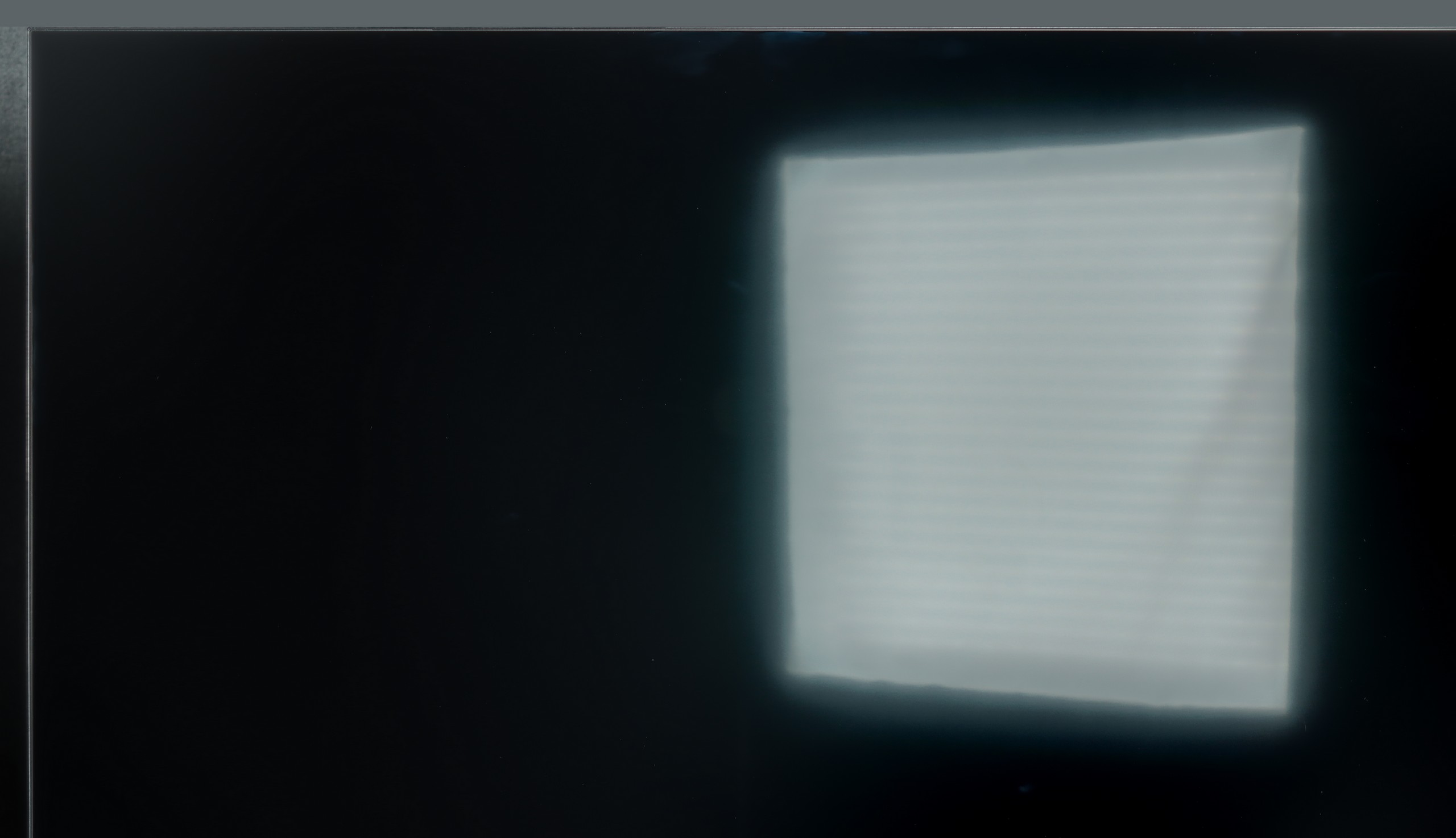


Panel brightness
Average luminance SDR
Haier Q80FUX: 317 cd/m2
Philips PML8709: 337 cd/m2
The Philips PML8709 is equipped with a satin matrix, which average handles glare reduction. In moderately lit rooms, reflections won't be too bothersome, however, in strongly sunlit conditions, the situation may become problematic. An additional challenge is the relatively low screen brightness, at around 330 cd/m². This level may prove insufficient for comfortable viewing in bright rooms, where the image may appear too dark and unclear. The television will perform better in controlled lighting conditions, but for those looking for a model that handles daytime viewing well, this could be a significant limitation.
The receiver's clash with the daily challenges posed by a bright lounge is quite decent with the Q80FUX, although it's certainly hard to talk about perfection here. The panel itself is equipped with a coating that effectively manages to suppress most reflections and glare from the surroundings. Equally important, even in more challenging lighting conditions, the screen can maintain pleasantly saturated colours. However, the weakness of this construction is revealed when backlight brightness comes into play. The previously mentioned, rather moderate maximum brightness (around 350 nits) means that in confrontation with intense natural light coming through the window, the screen often struggles to "break through." On a sunny day, the image might simply lack the necessary expressive strength.
Panel details
Subpixel Structure:

Panel uniformity and thermal imaging:


TV features
6.5/10
5.6/10
- HDMI inputs3 x HDMI 2.0, 0 x HDMI 2.14 x HDMI 2.0, 0 x HDMI 2.1
- Other inputsRCA (Chinch)
- OutputsToslink (Optical audio), eARC (HDMI), ARC (HDMI)Toslink (Optical audio), eARC (HDMI), ARC (HDMI), Mini-Jack (Headphones)
- Network InterfacesWi-Fi 2.4GHz, Wi-Fi 5GHz, Ethernet (LAN) 100MbpsWi-Fi 2.4GHz, Wi-Fi 5GHz, Ethernet (LAN) 100Mbps
- TV receptionDVB-T, DVB-T2, DVB-S, DVB-S2, DVB-CDVB-T, DVB-T2, DVB-S, DVB-S2, DVB-C
Classic features:
- Recording to USB (terrestrial TV)
- Recording programming
- Picture in Picture (PiP)
- RF remote control (no need to aim at the screen)
- Backlit remote control
- Teletext
- Audio only mode
- Bluetooth headphones support
- Simultaneous Bluetooth headphones & TV audio
Smart features:
- AirPlay
- Screen mirroring (Windows Miracast)
- Voice search
- Voice search in native language
- Ability to connect a keyboard and mouse


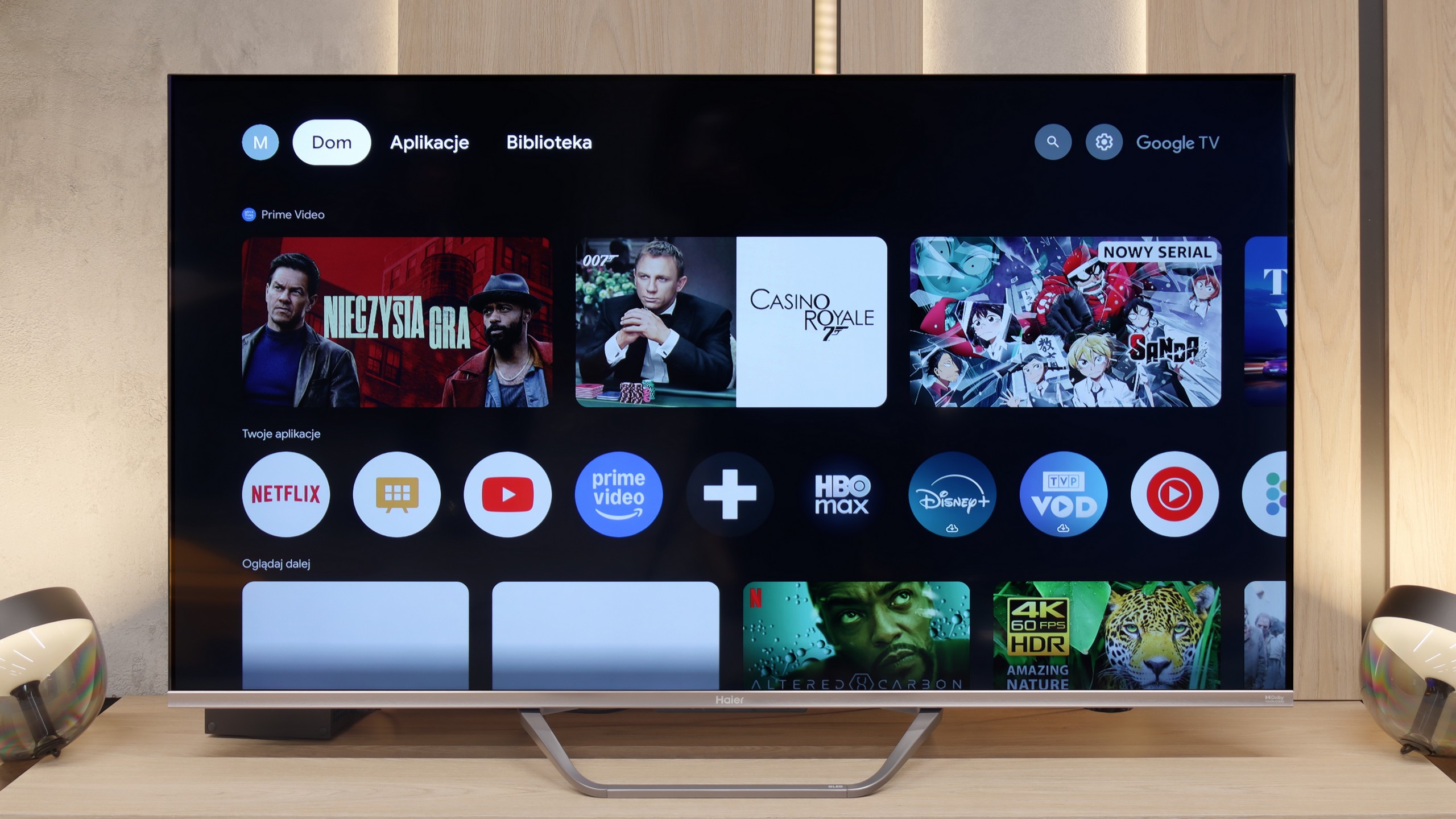
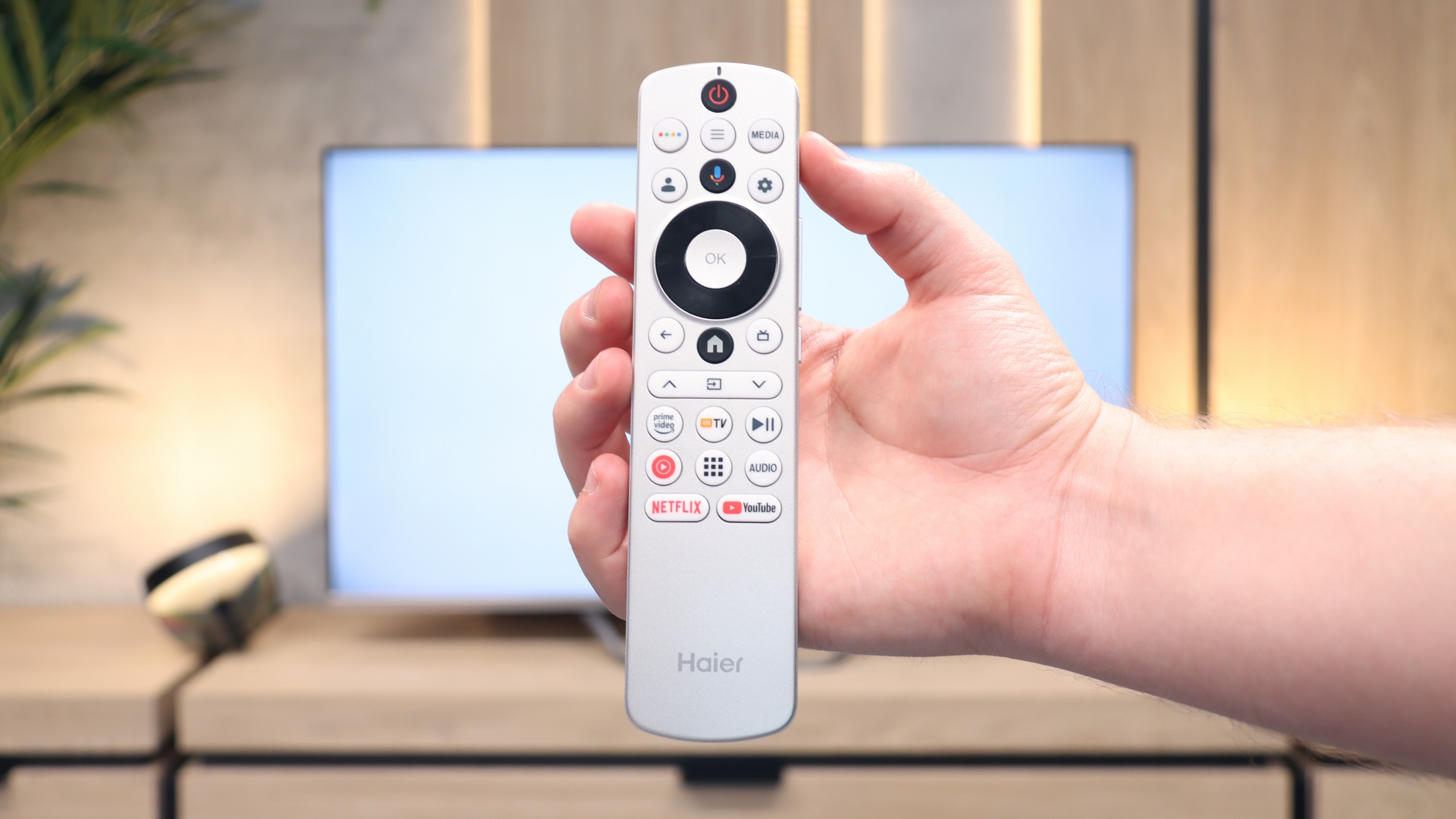

Philips PML8709 runs on the Google TV operating system. This is quite a surprising choice, considering it isn’t the flagship model of the brand. Fortunately, it has avoided the implementation of the less popular TitanOS, which can be seen as a plus. Google TV offers a well-known, clear interface and wide capabilities in terms of app installation, making the television more versatile.
In terms of user features, the television performs solidly. Daily use of the device is enjoyable thanks to support for voice search in Polish. The ability to connect peripheral devices such as keyboards, mice, or headphones via Bluetooth enhances its functionality. Unfortunately, the PML8709 does not offer more advanced options, such as USB recording or the PiP (picture-in-picture) feature, which may disappoint more demanding users.
An interesting fact, and quite a surprise, is the absence of the Ambilight system, for which Philips is commonly known. The decision to omit this technology in the PML8709 model seems puzzling, especially since Ambilight is often cited as one of the greatest strengths of televisions from this brand.
SmartTV on Haier Q80FUX: GoogleTV
First up, let's take a look at the smart layer, which in the Q80FUX is managed by the Google TV system. This is theoretically a huge advantage, providing access to an incredible library of apps, making it easy to cast from mobile devices, and offering convenient voice search. Unfortunately, like in other models from this brand that we've tested, the implementation of this platform leaves much to be desired. It’s not even about drastic freezes or delays in navigation, but rather a festival of minor bugs, shortcomings, and terrible translations in the menu. Because of this, it's hard to consider "Google TV" in Haier's version on par with what we know from Sony or TCL receivers, even though the same, proudly sounding name is on the box.
Classic Features
Moving on to the classic, functional features of the TV, the device's performance does not improve at all. The only thing worth praising is the presence of Bluetooth connectivity and an unusual but handy relic of the past in the form of an analogue headphone jack output. Apart from that, it's hard to find anything that would excite us. Due to the problematic software, the receiver (like its predecessors in our tests) was unable to find any terrestrial TV channels, even though other TVs connected to the same installation had no such issues. The remote control is also strange – its design may appeal to some, but due to the lack of a numeric keypad and the absurd placement of some buttons on the side edge, it definitely cannot be called senior-friendly.
Playing files from USB
7.6/10
9.6/10
Supported photo formats:
Maximum photo resolution:

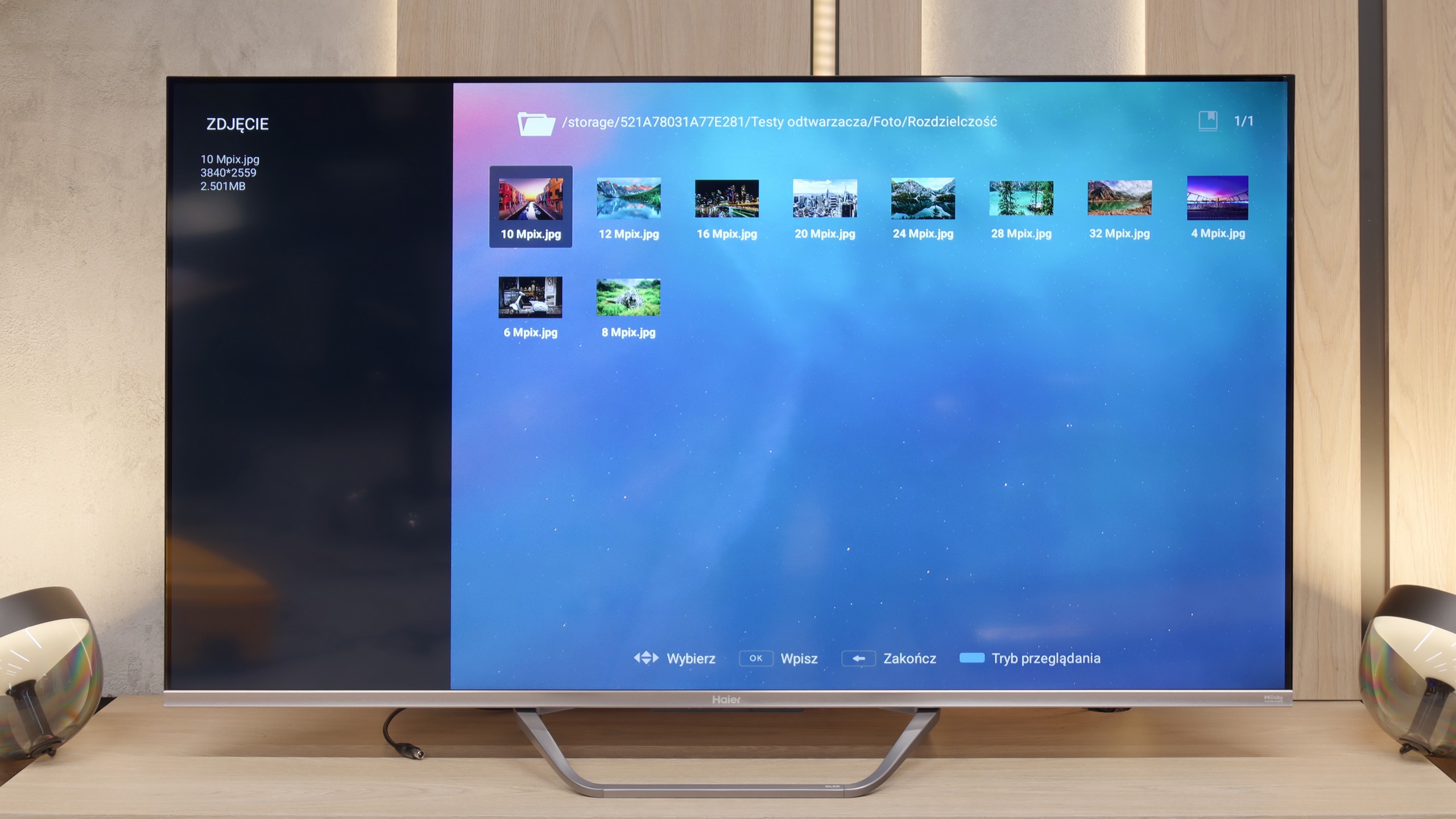
Philips PML8709 handles playing multimedia files from USB well. The television shouldn't have issues supporting most popular video, audio, and photo formats, making it a versatile tool for home entertainment. Files are read smoothly, and the interface of the built-in player is simple and intuitive.
However, a significant downside is the lack of support for Polish diacritics in subtitles, due to the incomplete implementation of the UTF-8 standard. Subtitles with Polish characters are displayed incorrectly, which can be frustrating for those watching films in their native language. This shortcoming means that users seeking full compatibility with subtitles may have to resort to using external media players.
We must admit that after a series of setbacks we faced in assessing the overall implementation of the Google TV system, we approached the media player test with a fair bit of caution. Meanwhile, in this one specific aspect, the Q80FUX served us a real surprise. The built-in app for handling files from USB drives works simply brilliantly. This software component seems to be completely immune to the issues plaguing the rest of the system, opening practically all the most important and popular video file formats that we threw at it.
Apps
9.6/10
9.6/10














































Sound
5.1/10
5.5/10
- Maximum volume-84dB
- Dolby Digital Plus 7.1
- Dolby True HD 7.1
- Dolby Atmos in Dolby Digital Plus (JOC)
- Dolby Atmos in Dolby True HD
- DTS:X in DTS-HD MA
- DTS-HD Master Audio
The sound quality in the Philips PML8709 is average and standard for a television equipped with speakers rated at 2 x 10 W. The audio is sufficient for everyday viewing, but it's hard to expect deep bass or clear details in more demanding scenes. On the positive side, it does support Dolby Atmos and DTS.
When it comes to "acoustic experiences," the Haier Q80FUX seems to adhere to the principle that sound is simply meant to be. And it is – that's about all that can be said for it. The built-in speakers produce sound in an extremely flat manner, lacking character, and most importantly, they are missing any clear bass foundation. A slight consolation is the fact that the television supports the Dolby Atmos format. However, let's be honest: to realistically take advantage of the benefits of this codec and hear the promised space, passive decoding capability is simply not enough. Connecting an external home theatre system or at least a decent soundbar is not just a recommendation in this case; it's an absolute necessity.
Sound Quality Test
No sound test video
Acoustic Measurements
No acoustic data
84dBC (Max)
75dBC
